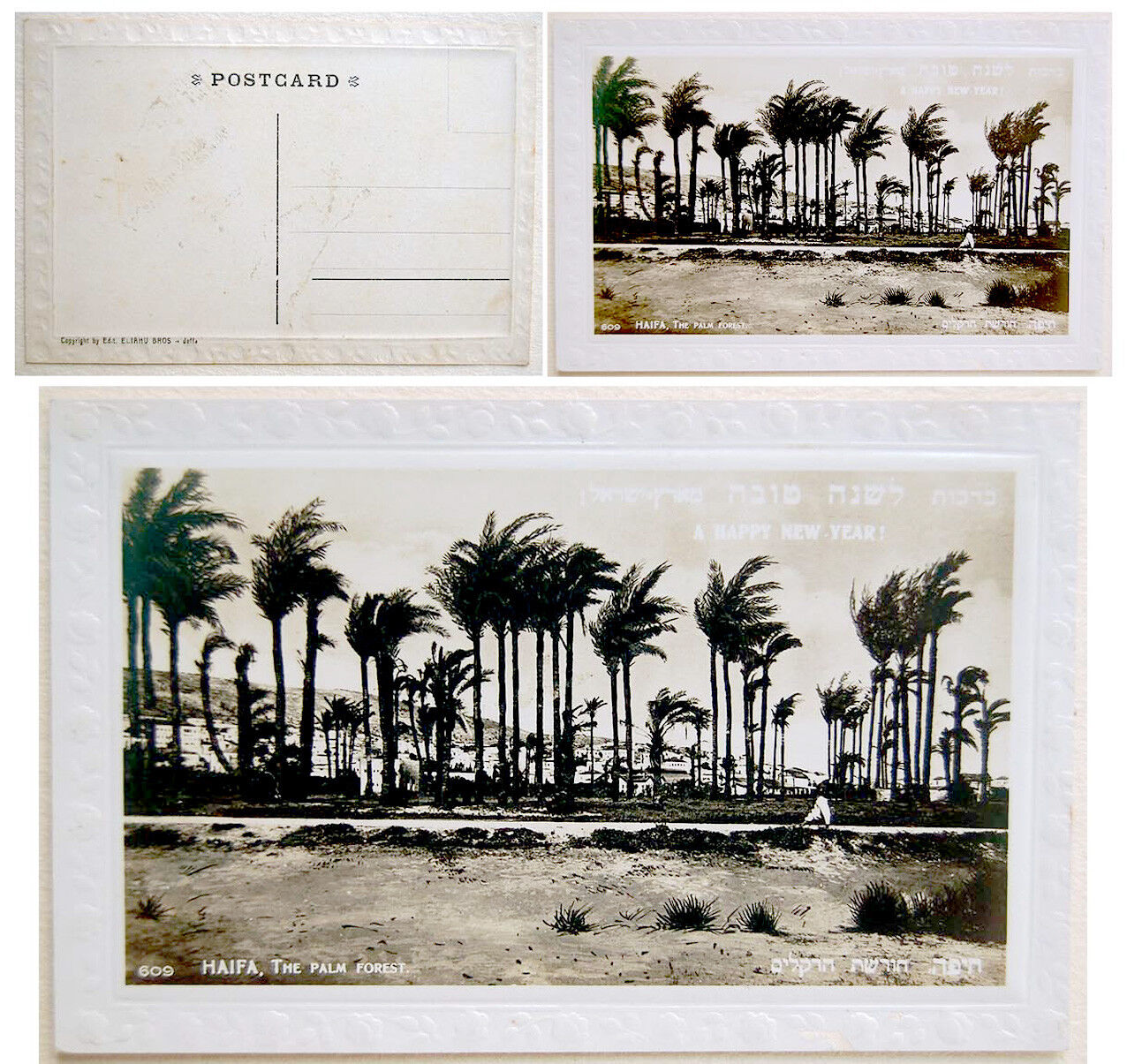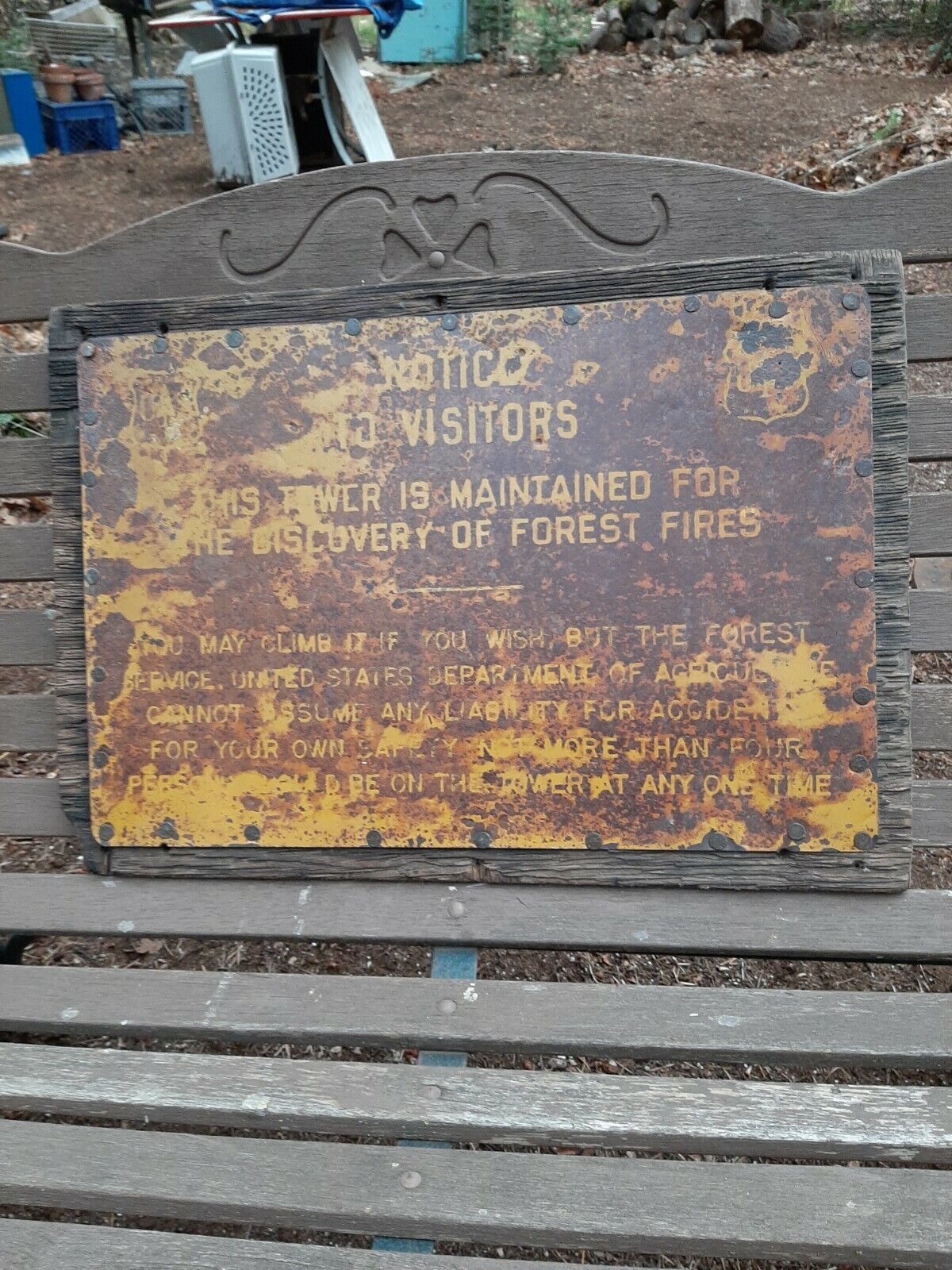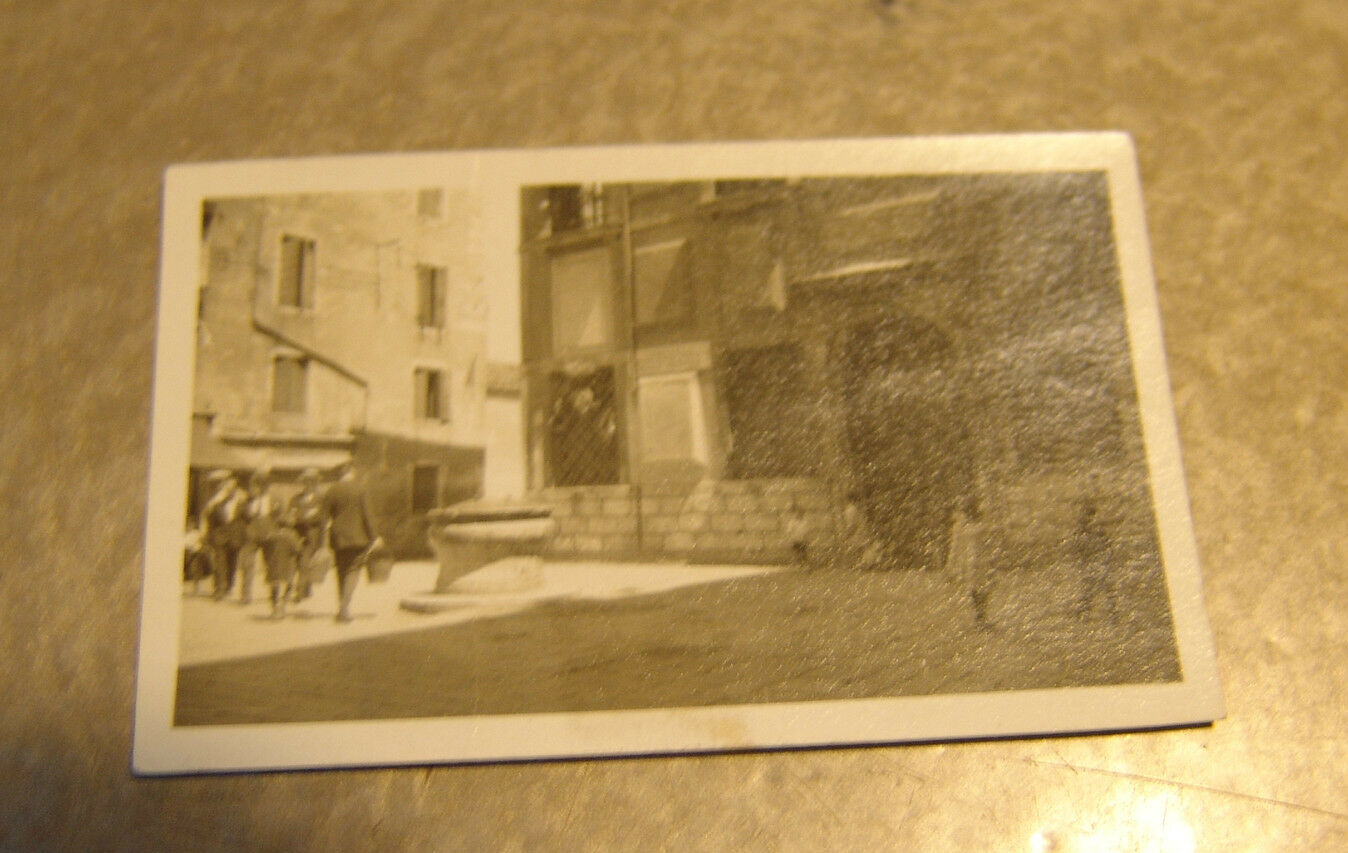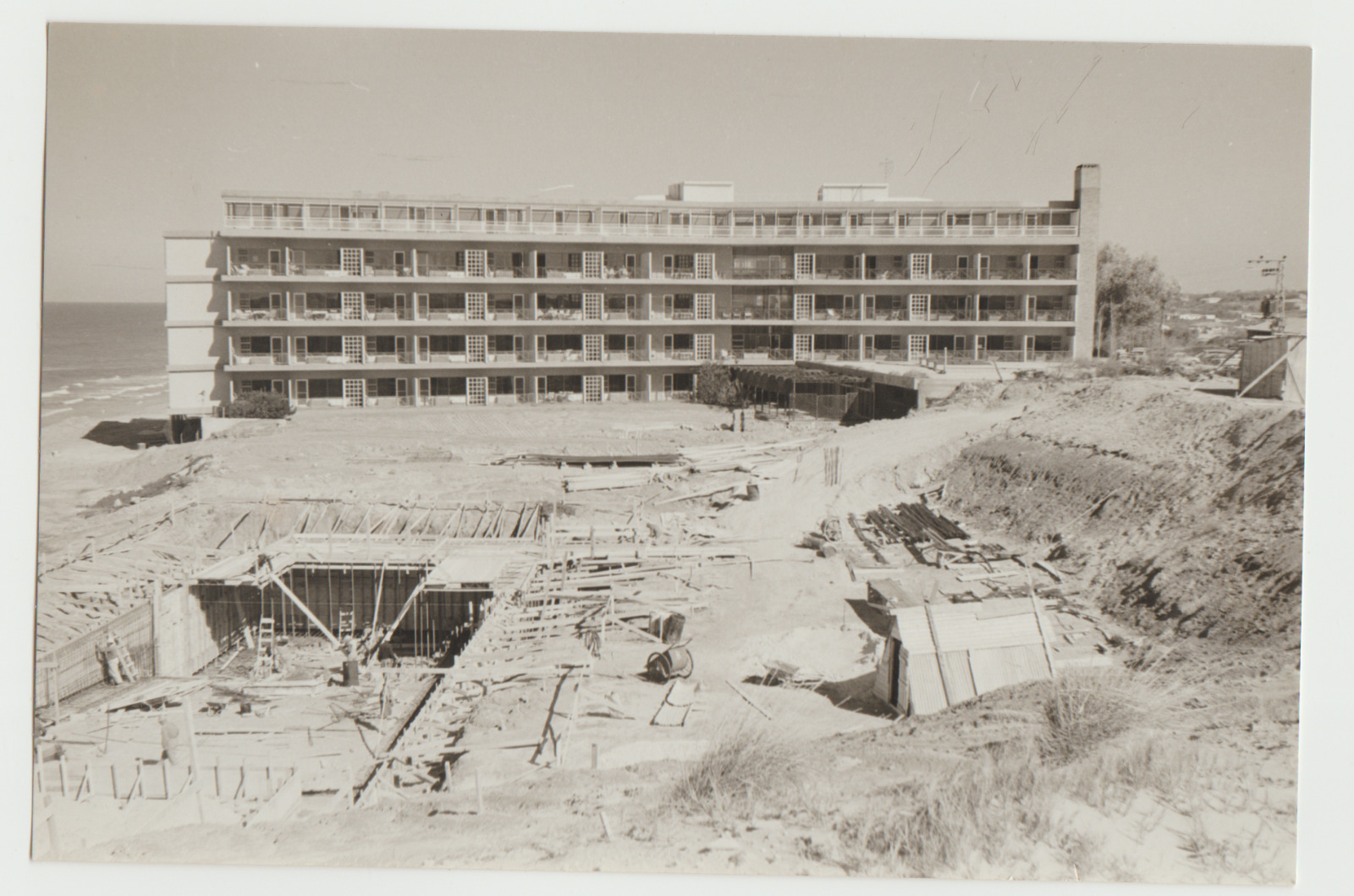-40%
1930 Palestine SHANA TOVA Photo POSTCARD Israel HAIFA Jewish PALM Judaica HEBREW
$ 29.04
- Description
- Size Guide
Description
DESCRIPTION:
Up for auction is an original Ca 1920's - 1930's Eretz Israel ( Then also refered to as Palestine ) FECORATED SHANAH TOVAH greeting PHOTO POSTCARD. ( New year greeting card ) . Depicting a PALM FOREST in HAIFA PALESTINE with a panoramic view of HAIFA in the background .
The POSTCARD is decorated with an EMBOSSED DECORATED FRAME . Published in Eretz Israel - Palestine around 70- 80 years ago before the establishment of the independent STATE of ISRAEL and its 1948 WAR of INDEPENDENCE . It's an ORIGINAL Silver Gelatine HAND MADE PHOTO by Edit. ELIAHU BROS JAFFA & TEL AVIV. The Shana Tova blessing " Brachot Le'SHANA TOVA Me'ERETZ ISRAEL" are also hand printed on top of the photo.
Hebrew & English headings . Devided back. Postaly unsed . Publisher Eliahu Bros Jaffa & Tel Aviv Palestine. Around 5.5 x 3.5". Very good condition. ( Pls look at scan for accurate AS IS images ) Postcard will be sent inside a protective packaging .
PAYMENTS
:
P
ayment method accepted : Paypal .
SHIPPMENT
:
Shipp worldwide via registered airmail is $ 19
.
Postcard will be sent inside a protective packaging .
Will be sent around 5 days after payment .
Haifa (Hebrew: חֵיפָה Heifa , colloquial Hebrew pronunciation: Arabic: حيفا Ḥayfā is the largest city in northern Israel, and the third-largest city in the country, with a population of over 268,000. Another 300,000 people live in towns directly adjacent to the city including Daliyat al-Karmel, Krayot, Nesher, and Tirat Carmel, and some Kibbuzim. Together these areas form a contiguous urban area home to nearly 600,000 residents which makes up the inner core of the Haifa metropolitan area. Haifa is a mixed city: 90% are Jews, more than a quarter of whom are immigrants from the former Soviet Union, while 10% are Arabs, predominantly of the Christian religion It is also home to the Bahá'í World Centre, a UNESCO World Heritage Site.Built on the slopes of Mount Carmel, the history of settlement at the site spans more than 3,000 years. The earliest known settlement in the vicinity was Tell Abu Hawam a small port city established in the Late Bronze Age (14th century BCE). In the 3rd century CE, Haifa was known as a dye-making center. Over the centuries, the city has changed hands: It has been conquered and ruled by the Phoenicians, Persians, Hasmoneans, Romans, Byzantines, Arabs, Crusaders, Ottomans, British, and the Israelis. Since the establishment of the State of Israel in 1948; the city has been governed by the Haifa Municipality.Today, the city is a major seaport located on Israel's Mediterranean coastline in the Bay of Haifa covering 63.7 square kilometres (24.6 sq mi). It is located about 90 kilometres (56 mi) north of Tel Aviv and is the major regional center of northern Israel. Two respected academic institutions, the University of Haifa and the Technion, are located in Haifa, and the city plays an important role in Israel's economy. It is home to Matam, one of the oldest and largest high-tech parks in the country Haifa Bay is a center of heavy industry, petroleum refining and chemical processing. Haifa was formerly the western terminus of an oil pipeline from Iraq via JordanThe city is considered to be the Israeli equivalent of San Francisco because of its sloping steep streets and proximity to a bay. The widespread custom of sending Jewish New Year's cards dates to the Middle Ages, thus predating by centuries Christian New Year's cards, popular in Europe and the United States only since the 19 century. The custom is first mentioned in the Book of Customs of Rabbi Jacob, son of Moses *Moellin (1360–1427), the spiritual leader of German Jewry in the 14 century (Minhagei Maharil, first ed. Sabionetta, 1556). Based on the familiar talmudic dictum in tractate Rosh ha-Shanah 16b concerning the "setting down" of one's fate in one of the three Heavenly books that are opened on the Jewish New Year, the Maharil and other German rabbis recommended that letters sent during the month of Elul should open with the blessing "May you be inscribed and sealed for a good year." Outside of Germany and Austria, other Jewish communities, such as the Sephardi and Oriental Jews, only adopted this custom in recent generations. The German-Jewish custom reached widespread popularity with the invention – in Vienna, 1869 – of the postal card. The peak period of the illustrated postcard, called in the literature "The Postal Card Craze" (1898–1918), also marks the flourishing of the Jewish New Year's card, produced in three major centers: Germany, Poland, and the U.S. (chiefly in New York). The German cards are frequently illustrated with biblical themes. The makers of Jewish cards in Warsaw, on the other hand, preferred to depict the religious life of East European Jewry in a nostalgic manner. Though the images on their cards were often theatrically staged in a studio with amateur actors, they preserve views and customs lost in the Holocaust. The mass immigration of the Jews from Eastern Europe to the United States in the first decades of the 20 century gave a new boost to the production of the cards. Some depicted America as the new homeland, opening her arms to the new immigrants, others emphasized Zionist ideology and depicted contemporary views of Ereẓ Israel. The Jews of 19 c. Ereẓ Israel ("the old yishuv"), even prior to the invention of the postal card, sent tablets of varying sizes with wishes and images for the New Year, often sent abroad for fundraising purposes. These tablets depicted the "Four Holy Cities" as well as holy sites in and around Jerusalem. A popular biblical motif was the Binding of Isaac, often taking place against the background of the Temple Mount and accompanied by the appropriate prayer for Rosh ha-Shanah. Also common were views of the yeshivot or buildings of the organizations which produced these tablets. In the 1920s and 1930s the cards highlighted the acquisition of the land and the toil on it as well as "secular" views of the proud new pioneers. Not only did this basically religious custom continue and become more popular, but the new cards attest to a burst of creativity and originality on the subject matter as well as in design and the selection of accompanying text. Over the years, since the establishment of the State of Israel, the custom has continued to flourish, with the scenes and wishes on the cards developing as social needs and situations changed. The last two decades of the 20 century have seen a decline in the mailing of New Year's cards in Israel, superseded by phone calls or internet messages. In other countries, especially the U.S., cards with traditional symbols are still commonly sent by mail, more elaborately designed than in the past. Thus, the simple and naïve New Year's card vividly reflects the dramatic changes in the life of the Jewish people over the last generations Jerusalem Hebrew: יְרוּשָׁלַיִם Arabic: القُدسlocated on a plateau in the Judean Mountains between the Mediterranean and the Dead Sea, is one of the oldest cities in the world. It is considered holy to the three major Abrahamic religions—Judaism, Christianity and Islam. Israelis and Palestinians both claim Jerusalem as their capital, as Israel maintains its primary governmental institutions there and the State of Palestine ultimately foresees it as its seat of power; however, neither claim is widely recognized internationally.During its long history, Jerusalem has been destroyed twice, besieged 23 times, attacked 52 times, and captured and recaptured 44 times. The oldest part of the city was settled in the 4th millennium BCE. In 1538, walls were built around Jerusalem under Suleiman the Magnificent. Today those walls define the Old City, which has been traditionally divided into four quarters—known since the early 19th century as the Armenian, Christian, Jewish, and Muslim Quarters. The Old City became a World Heritage site in 1981, and is on the List of World Heritage in Danger. Modern Jerusalem has grown far beyond its boundaries.According to the Biblical tradition, King David established the city as the capital of the united Kingdom of Israel and his son, King Solomon, commissioned the building of the First Temple. These foundational events, straddling the dawn of the Ist Millenium BCE, assumed central symbolic importance for the Jewish People. The sobriquet of holy city (עיר הקודש, transliterated ‘ir haqodesh) was probably attached to Jerusalem in post-exilic times. The holiness of Jerusalem in Christianity, conserved in the Septuagint which Christians adopted as their own authority, was reinforced by the New Testament account of Jesus's crucifixion there. In Sunni Islam Jerusalem is the third-holiest city, after Mecca and Medina. In Islamic tradition in 610 CE it became the first Qibla, the focal point for Muslim prayer (Salah), and Muhammad made his Night Journey there ten years later, ascending to heaven where he speaks to God, according to the Quran. As a result, despite having an area of only 0.9 square kilometres (0.35 sq mi), the Old City is home to many sites of seminal religious importance, among them the Temple Mount and its Western Wall, the Church of the Holy Sepulchre, the Dome of the Rock and al-Aqsa Mosque.Today, the status of Jerusalem remains one of the core issues in the Israeli–Palestinian conflict. During the 1948 Arab-Israeli War, West Jerusalem was among the areas captured and later annexed by Israel while East Jerusalem, including the Old City, was captured and later annexed by Jordan. Israel captured East Jerusalem from Jordan during the 1967 Six-Day War and subsequently annexed it. Currently, Israel's Basic Law refers to Jerusalem as the country's "undivided capital". The international community has rejected the latter annexation as illegal and treats East Jerusalem as Palestinian territory occupied by Israe The international community does not recognize Jerusalem as Israel's capital, and the city hosts no foreign embassies.According to the Palestinian Central Bureau of Statistics, 208,000 Palestinians live in East Jerusalem, which is sought by the Palestinian Authority as the capital of Palestine.All branches of the Israeli government are located in Jerusalem, including the Knesset (Israel's parliament), the residences of the Prime Minister and President, and the Supreme Court. Jerusalem is home to the Hebrew University and to the Israel Museum with its Shrine of the Book. The Jerusalem Biblical Zoo has ranked consistently as Israel's top tourist attraction for Israelis ebay2986














